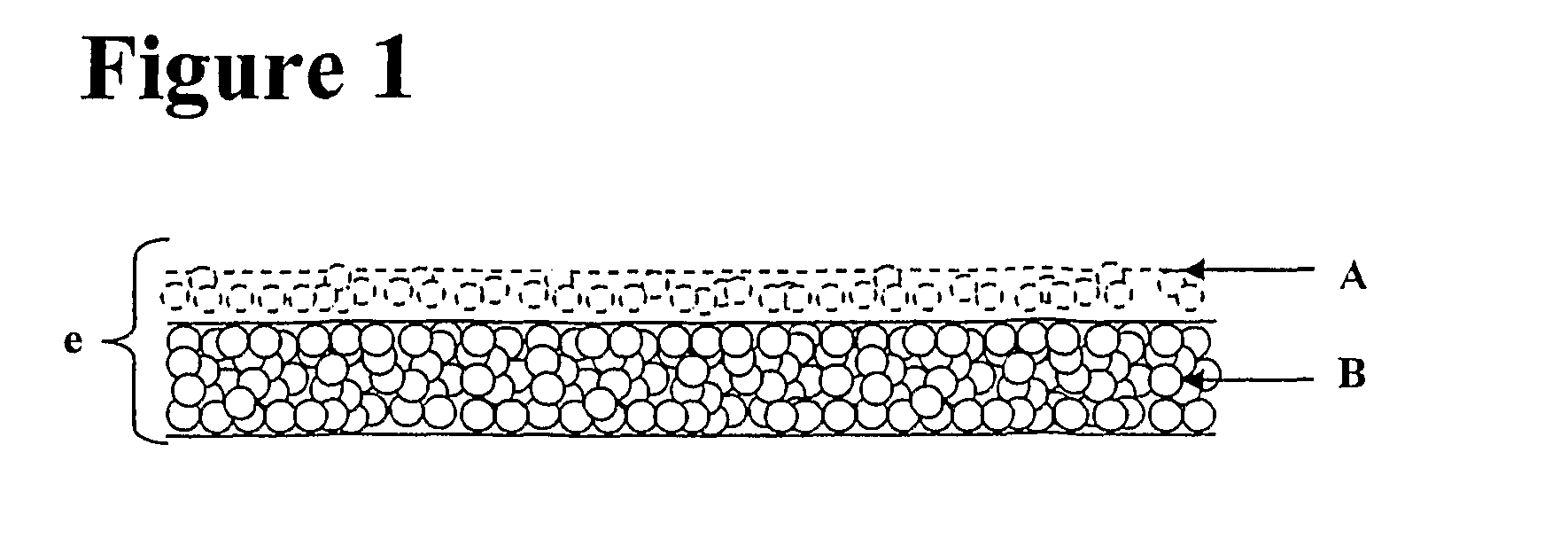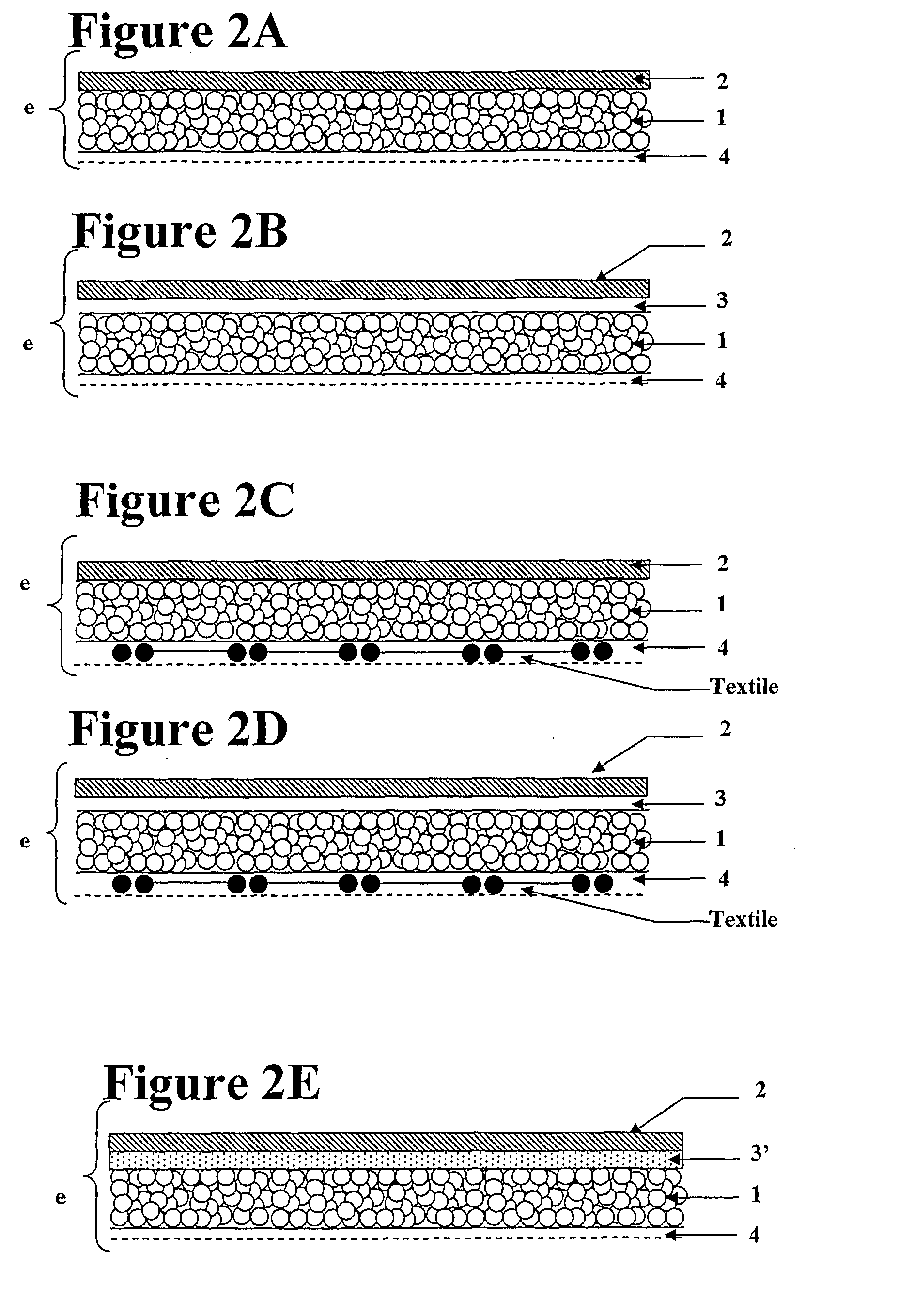Surgical patch
- Summary
- Abstract
- Description
- Claims
- Application Information
AI Technical Summary
Benefits of technology
Problems solved by technology
Method used
Image
Examples
example 1
Preparation of Coated Mesh Reinforcement Member
A knitted isoelastic, multifilament polyglycolic acid mesh reinforcement member is coated in a solution of porcine collagen at 0.8% w / v, by soaking it in the solution, spin-drying it and leaving it to dry under a laminar flow. This cycle of processes is repeated up to two times in order to obtain covering of the yarns.
The collagen used is porcine collagen type I, extracted from porcine dermis by solubilization at acidic pH or by digestion with pepsin, and purified by saline precipitations according to known techniques.
Dry collagen fibres obtained by precipitation of an acid solution of collagen by adding NaCl, and then washing and drying of the precipitate obtained with aqueous solutions of acetone having an increasing concentration of 80% to 100%, are preferably used.
At the end of the coating, the collagen deposited on the knit is crosslinked with glutaraldehyde at 0.5% w / v (aqueous solution of glutaraldehyde at 25%, w / v, sold by the c...
example 2
Preparation of the Porous Matrix
A suspension of collagen is prepared by mixing 60.5 g of glutaraldehyde-crosslinked collagen suspension at 1% w / w and 60.5 g oxidized collagen solution at 1% w / w. The pH of the collagen suspension thus obtained is then increased to 7 and tri-lysine is added to the blend as a first hydrogel precursor at a final concentration of 2.5 mg / ml. Then the suspension poured in a 17×12 cm box and is further lyophilized according to the following method: freezing is carried out as rapidly as possible, by decreasing the temperature of the product from 8° C. to −45° C., generally in less than 2 hours. Primary desiccation is initiated at −45° C., at a pressure of from 0.1 to 0.5 mbar. During this step, the temperature is gradually increased, with successive slopes and plateaux, to +30° C. The lyophilization ends with secondary desiccation, at +30° C., for 1 to 24 hours. Preferably, the vacuum at the end of secondary desiccation is between 0.005 and 0.2 mbar. The tot...
example 3
Preparation of the Porous Matrix
A suspension of collagen is prepared by mixing 60.5 g of glutaraldehyde-crosslinked collagen suspension at 1% w / w and 60.5 g oxidized collagen solution at 1% w / w. The pH of the collagen suspension thus obtained is then increased to 7. Then the suspension is poured in a 17×12 cm box and is further lyophilized according to the following method: freezing is carried out as rapidly as possible, by decreasing the temperature of the product from 8° C. to −45° C., generally in less than 2 hours. Primary desiccation is initiated at −45° C., at a pressure of from 0.1 to 0.5 mbar. During this step, the temperature is gradually increased, with successive slopes and plateaux, to +30° C. The lyophilization ends with secondary desiccation, at +30° C., for 1 to 24 hours. Preferably, the vacuum at the end of secondary desiccation is between 0.005 and 0.2 mbar. The total lyophilization time is from 18 to 72 hours.
Alternate Method for the Preparation of the Porous Matri...
PUM
| Property | Measurement | Unit |
|---|---|---|
| Structure | aaaaa | aaaaa |
| Bioabsorbable | aaaaa | aaaaa |
Abstract
Description
Claims
Application Information
 Login to View More
Login to View More - R&D Engineer
- R&D Manager
- IP Professional
- Industry Leading Data Capabilities
- Powerful AI technology
- Patent DNA Extraction
Browse by: Latest US Patents, China's latest patents, Technical Efficacy Thesaurus, Application Domain, Technology Topic, Popular Technical Reports.
© 2024 PatSnap. All rights reserved.Legal|Privacy policy|Modern Slavery Act Transparency Statement|Sitemap|About US| Contact US: help@patsnap.com










